
A slave rebellion is an armed uprising by enslaved people, as a way of fighting for their freedom. Rebellions of enslaved people have occurred in nearly all societies that practice slavery or have practiced slavery in the past. A desire for freedom and the dream of successful rebellion is often the greatest object of song, art, and culture amongst the enslaved population. Many of the events, however, are often violently opposed and suppressed by slaveholders.
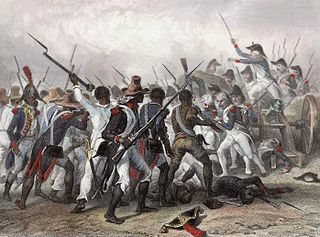
United States v. Schooner Amistad, 40 U.S. 518 (1841), was a United States Supreme Court case resulting from the rebellion of Africans on board the Spanish schooner La Amistad in 1839. It was an unusual freedom suit that involved international diplomacy as well as United States law. The historian Samuel Eliot Morison described it in 1969 as the most important court case involving slavery before being eclipsed by that of Dred Scott v Sandford in 1857.

The Middle Passage was the stage of the Atlantic slave trade in which millions of enslaved Africans were transported to the Americas as part of the triangular slave trade. Ships departed Europe for African markets with manufactured goods, which were then traded for slaves with rulers of African states and other African slave traders. Slave ships transported the slaves across the Atlantic. The proceeds from selling slaves were then used to buy products such as furs and hides, tobacco, sugar, rum, and raw materials, which would be transported back to Europe to complete the triangle.
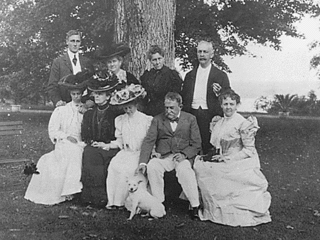
In the United States, members of the Delano family include U.S. presidents Franklin Delano Roosevelt, Ulysses S. Grant and Calvin Coolidge, astronaut Alan B. Shepard, and writer Laura Ingalls Wilder. Its progenitor is Philippe de Lannoy (1602–1681), a Pilgrim of Walloon descent, who arrived at Plymouth, Massachusetts, in the early 1620s. His descendants also include Eustachius De Lannoy, Frederic Adrian Delano, Robert Redfield, and Paul Delano. Delano family forebears include the Pilgrims who chartered the Mayflower, seven of its passengers, and three signers of the Mayflower Compact.

Cuffy, also spelled as Kofi or Koffi, was an Akan man who was captured in his native West Africa and stolen for slavery to work on the plantations of the Dutch colony of Berbice in present-day Guyana. In 1763, he led a major slave revolt of more than 3,800 slaves against the colonial regime. Today, he is a national hero in Guyana.
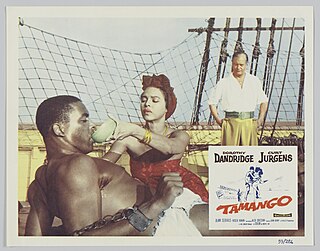
Tamango is a 1958 French/Italian film directed by John Berry, a blacklisted American director who exiled himself to Europe. The film stars Dorothy Dandridge, Curd Jürgens, Alex Cressan and Jean Servais.

Benito de Soto Aboal Pontevedra is in Galicia in northern Spain where the language is close to Portuguese, which has confused some sources that say he was Portuguese. He was captain of the pirate ship Defensor de Pedro, sometimes incorrectly named as the Burla Negra, that was responsible for several piracies in the Atlantic in 1828, in a period of increased piracy following the independence of the new states of South America. The most notable attacks were on the British Indiaman Morning Star and the American ship Topaz, which involved great violence. De Soto was captured and tried in Gibraltar on 20 January 1830 and he was hanged on 25 January. Other members of his crew were captured in Spain. Their trial there began on 19 November 1829 and ten men were executed on 11 and 12 January 1830.
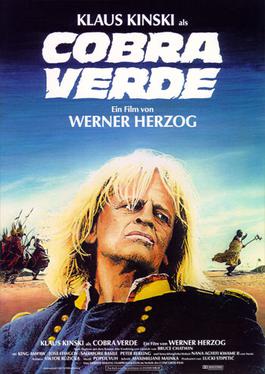
Cobra Verde is a 1987 German drama film directed by Werner Herzog and starring Klaus Kinski, in their fifth and final collaboration. Based upon Bruce Chatwin's 1980 novel The Viceroy of Ouidah, the film depicts the life of a fictional slave trader who travels to the West African kingdom of Dahomey. It was filmed on location in Ghana, Brazil, and Colombia.

Slave ships were large cargo ships specially built or converted from the 17th to the 19th century for transporting slaves. Such ships were also known as "Guineamen" because the trade involved human trafficking to and from the Guinea coast in West Africa.
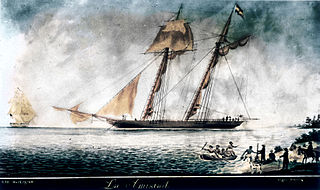
La Amistad was a 19th-century two-masted schooner owned by a Spaniard colonizing Cuba. It became renowned in July 1839 for a slave revolt by Mende captives who had been captured and sold to European slave traders and illegally transported by a Portuguese ship from West Africa to Cuba, in violation of European treaties against the Atlantic slave trade. Spanish plantation owners Don José Ruiz and Don Pedro Montes bought 53 captives in Havana, Cuba, including four children, and were transporting them on the ship to their plantations near Puerto Príncipe. The revolt began after the schooner's cook jokingly told the slaves that they were to be "killed, salted, and cooked." Sengbe Pieh unshackled himself and the others on the third day and started the revolt. They took control of the ship, killing the captain and the cook. Three Africans were also killed in the melee.
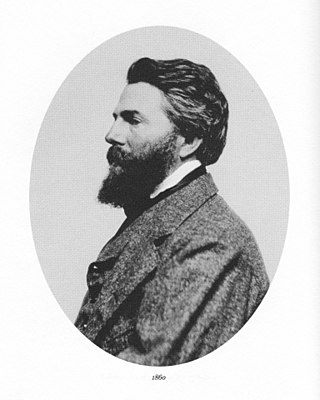
Benito Cereno is a novella by Herman Melville, a fictionalized account about the revolt on a Spanish slave ship captained by Don Benito Cereno, first published in three installments in Putnam's Monthly in 1855. The tale, slightly revised, was included in his short story collection The Piazza Tales that appeared in May 1856. According to scholar Merton M. Sealts Jr., the story is "an oblique comment on those prevailing attitudes toward blacks and slavery in the United States that would ultimately precipitate civil war between North and South". The famous question of what had cast such a shadow upon Cereno was used by American author Ralph Ellison as an epigraph to his 1952 novel Invisible Man, excluding Cereno's answer, "The negro." Over time, Melville's story has been "increasingly recognized as among his greatest achievements".
The Piazza Tales is a collection of six short stories by American writer Herman Melville, published by Dix & Edwards in the United States in May 1856 and in Britain in June. Except for the newly written title story, "The Piazza," all of the stories had appeared in Putnam's Monthly between 1853 and 1855. The collection includes what have long been regarded as three of Melville's most important achievements in the genre of short fiction, "Bartleby, the Scrivener", "Benito Cereno", and "The Encantadas", his sketches of the Galápagos Islands.
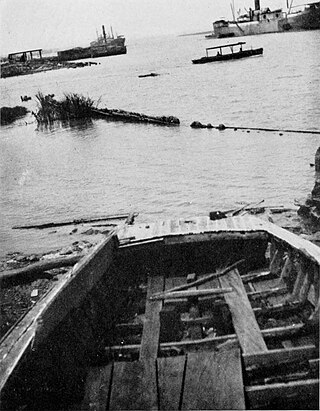
The schooner Clotilda was the last known U.S. slave ship to bring captives from Africa to the United States, arriving at Mobile Bay, in autumn 1859 or on July 9, 1860, with 110 African men, women, and children. The ship was a two-masted schooner, 86 feet (26 m) long with a beam of 23 ft (7.0 m).
The Miskito Sambu, also known simply as the Miskito, are an ethnic group of mixed cultural ancestry occupying a portion of the Caribbean coast of Central America known as the Mosquito Coast region. Although older records, beginning with Spanish documents of the early 18th century, refer to the group as "Mosquitos Zambos", modern ethnographic terminology uses the term Miskito.

African Slave Trade Patrol was part of the Blockade of Africa suppressing the Atlantic slave trade between 1819 and the beginning of the American Civil War in 1861. Due to the abolitionist movement in the United States, a squadron of U.S. Navy warships and Cutters were assigned to catch slave traders in and around Africa. In 42 years about 100 suspected slave ships were captured.

The Capture of the brig Brillante occurred around 1832 and was considered a significant feat in the Blockade of Africa. Brillante was a slave ship that the Royal Navy succeeded in capturing after two failed attempts. The brig had a crew of sixty men and was armed with ten guns. Brillante was under the command of an English-born captain named Homans when she was seized. Homans was an experienced slaver who in ten cruises had landed 5,000 slaves on the coasts of Brazil and Cuba. Brillante reportedly fought at least two battles against the British anti-slavery patrols. She allegedly forced the crew of one British cruiser to abandon ship after a bloody action and on a different occasion, she repulsed boats from a Royal Navy sloop-of-war.
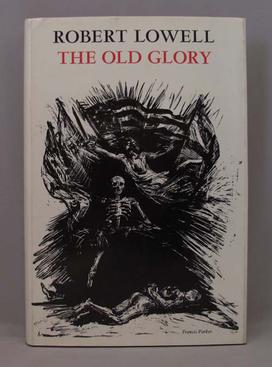
The Old Glory is a play written by the American poet Robert Lowell that was first performed in 1964. It consists of three pieces that were meant to be performed together as a trilogy. The first two pieces, "Endecott and the Red Cross" and "My Kinsman, Major Molineux" were stage adaptations of short stories by Nathaniel Hawthorne, and the third piece, "Benito Cereno," was a stage adaptation of the novella by Herman Melville.
P. Sterling Stuckey was an American professor of history, Distinguished Professor Emeritus at the University of California, Riverside (UCR), specializing in American slavery, the arts and history, and Afro-American intellectual and cultural history.
Roebuck was an American merchantmen built in New England in 1794. In 1795 she made one voyage as a slave ship, sailing to Liverpool, then to Sierra Leone and finally Havana. Afterwards, she returned to the United States.














